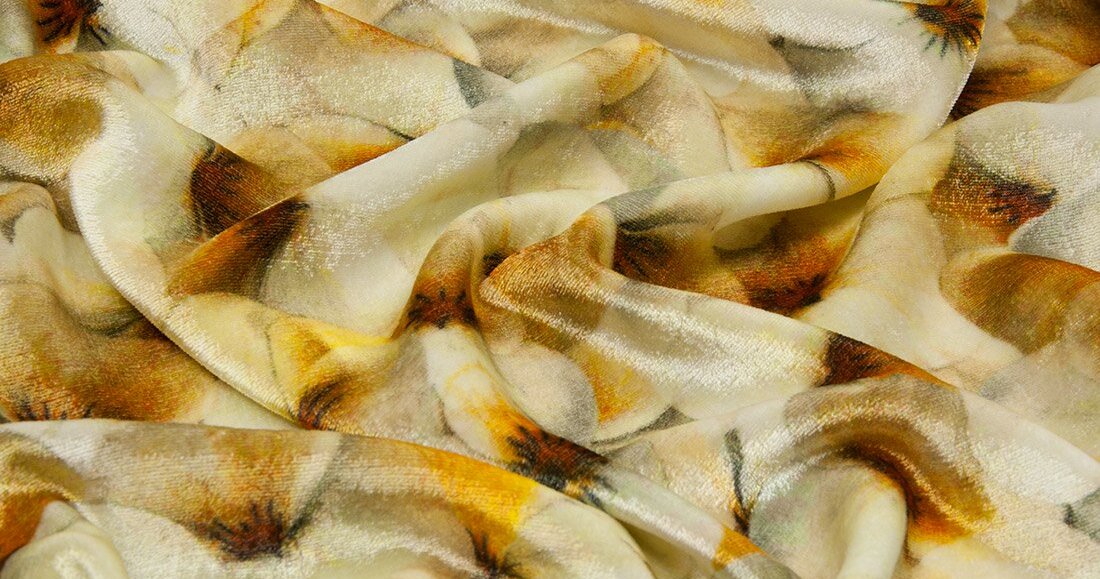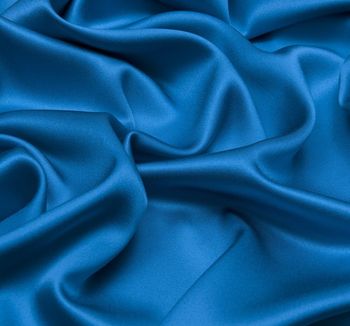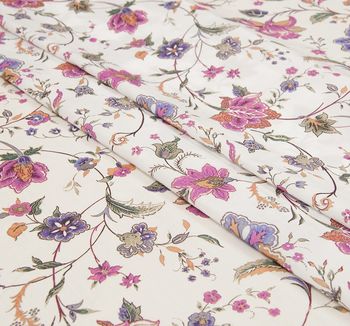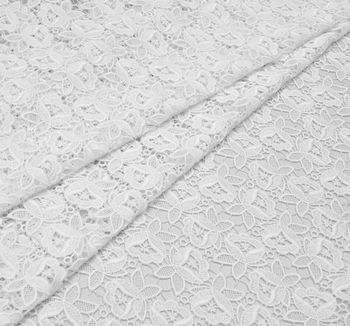Silk is a timelessly trendy natural fabric woven from the cocoons of silk worms. The world’s most famous fashion brands regularly apply it for various men’s and women’s outfits earning the admiration of the audience.
Velvet Fabrics in Luxury Trends 2018
Velvet is a type of cloth with a distinctive short pile. Historically woven from silk, it can also be made from a variety of fibers, such as cotton, viscose, rayon or synthetic fibers. Velvet fabric is commonly woven as double cloth and then cut apart to produce two pile fabrics. The most expensive type is silk velvet, originally reserved for royalty.
Velvet is the epitome of luxury. We often see it on the catwalks and it’s our first association when we think about eveningwear. Today, velvet material is available to anyone, and it is used not only for special occasion gowns, but also for everyday pieces and loungewear.
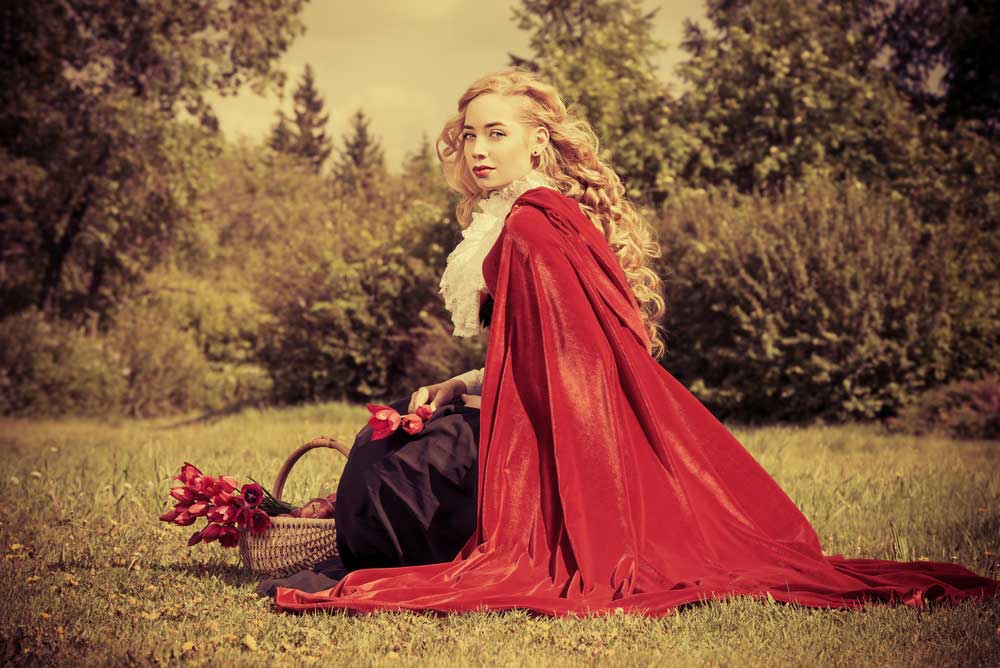
This cloth is renowned for its soft hand and distinctive sheen, which makes it the first choice for evening or cocktail dresses, suits, jackets and other pieces of luxury clothing.
What Is Velvet Made of?
Though velvet is always soft (remember the word ‘velvety’?), the way it drapes and behaves depends much on the composition. Here’s a summary table of plain velvet and its common characteristics:
| Fiber | Texture | Use |
|---|---|---|
|
Silk velvet |
Shimmering, soft and smooth, lightweight, with a great drape |
Evening dresses, formal wear, wedding gowns |
|
Cotton velvet |
Sturdy and soft. Has less drape compared to other types of velvet |
Occasion wear dresses, jackets, trousers |
|
Viscose/Rayon velvet |
Similar to silk velvet in terms of quality and drape. Usually blended with silk or synthetic fibers, very soft and shiny |
Evening wear, wedding dresses |
|
Synthetic velvet |
100% synthetic or mixed with natural fibers. No stretch, soft, wonderful drape, resistant to mildew |
Evening gowns, dresses |
|
Wool velvet |
Heavy, soft, rich, textured. Often very thick |
Upholstery, draperies, accessories |
|
Linen velvet |
Soft, matt, dense linen pile on the linen or cotton ground. Might have a rugged look |
Upholstery, curtains with a vintage look |
|
Stretch velvet |
Any type of velvet with a touch of elastane, lycra or spandex |
Ideal for women’s apparel to accentuate the curves and hug the body |
100% silk velvet fabric is quite a luxury and costs much more than other types of velvet. To make it more affordable, velvet producers often combine silk and rayon, or viscose. What you get in the end is a very flowy, soft and reflective fabric ideal for red carpet looks.
Cotton velvet fabric is less expensive, but it also looks less luxurious. However, this kind of velvet has more body and makes handsome suits and jackets. Most men would choose cotton velvet fabric for their special occasion jackets because it is not slippery and has less sheen.
Plus, there are also some types of velvet that most of us have never heard of. E.g., the Kuba velvet, also known as Kasai velvet, is woven by hand in the Democratic Republic of Congo and is characterized by a very complex geometric design. The Kasai velvet is made from the leaves of the raffia tree, a palm tree native to tropical Africa.
Velvet fabric collection at Tissura
Types of Velvet Fabric
While some of us choose fabric by the way it feels to the touch, others pay attention to the design. Below are some types of velvet material you can find in fabric shops and boutiques.
- Crushed velvet. It has a peculiar crinkle look and is extremely lustrous. Produced either by twisting the fabric while it’s wet or by pressing the nap in different directions.
- Devore velvet. Also known as ‘burn-out’, this type of velvet cloth has some pile-free areas where the pile has been removed to create the pattern. The ground and the pile are woven of different fibers.
- Lyons velvet. A heavy, crisp velvet fabric with a thick pile, woven in Lyons, France.
- Nacre velvet. Similar to shot silk, this type of velvet is iridescent, because the ground and the pile are woven in different colors.
- Panne velvet. The nap is pressed in one direction.
- Pile- on-pile velvet. A type of velvet woven with piles of different heights.
These are just some examples of velvet materials you can use for your fashion projects. In fact, there are as many of them as there are stars in the sky! What makes velvet even trickier is its resemblance to such ‘velvet-look’ materials as velour and velveteen. How do you tell them apart?
Velvet, Velour & Velveteen
Are you one of those people who keep confusing these types of fabrics? Let’s learn how to differentiate them once and for all.
- Velvet has the longest pile compared to velour and velveteen. Soft and shiny, it is used throughout the wardrobe, from evening wear to casual pieces. No matter which fiber velvet is made from, it turns any piece of clothing into a high-end luxury item.
- Velour, or velours is the knitted version of velvet invented in 1844 in France. Usually made of cotton or cotton blend, it is stretchier than velvet but has a similar drape. Ideal for dancewear and sports clothes, it has also found its way into the world of fashion and interiors. Velour fabric is often used for drapes, curtains and blankets.
- Velveteen is made of cotton, or cotton/silk blend. As the name suggests, it resembles velvet but is not as soft and dense. Its pile is shorter, never more than 3 mm deep, and it has some give. If you compare velveteen to velvet, you’ll notice that it has less shine and drape. Thick and durable, velveteen sews well into warm trousers, dresses, skirts, coats, waistcoats, etc. It is ideal for casual wear.
To sum it up, velvet, velour and velveteen may look pretty much the same, but they do differ in terms of drape, feel and even texture. If you’re hesitating which one to choose for your future dress or jacket, here’s a little tip for you: opt for natural fibers rather than synthetics, because they feel nice and adapt to your body. Generally, natural fabrics cost more but think of it as an investment in your style, comfort and even health.
Plush may look similar to velvet, but these are completely different species. Typically made of 100% polyester, plush has a very long pile and is extremely soft to the touch. Compared to velvet, the pile is less dense. Plush fabric is used to make cozy pajamas, robes and stuffed toys.
Hottest Fashion Trends 2019
The first velvet fabric ever created was woven in China in the 3 rd century BC. Later it spread all over Europe and gained utmost popularity during the Renaissance. Italy became the leading velvet-maker, producing intricately patterned designs for nobility.
No wonder, it’s been with us throughout the 20 th century. Remember those head-to-toe velvet jumpsuits and formfitting dresses that were all the rage in the 70s? Velvet has been a constant fabric of choice for many designers, both in ready-to-wear and haute couture segments. It added a royal touch to Fall/Winter 2016 and 2017 collections, it has made its grand return in 2018 and is surely expected to remain en vogue in 2019. So, what’s hot on the catwalks?
.jpg)
Bold colors
Choose bright hues to draw attention to your beautiful self! Though black velvet fabric is a timeless classic, this season’s catwalks are flooded with eye-catching blue, pink, yellow, red and golden colorways. Jewel tones are cool!
At the same time, 2019 welcomes pastels too. The most trendy shades are represented in the table 2:
| colour | trendy shades |
|---|---|
| grey | metallic, dark, whitened |
| violet | plum, eggplant |
| green | emerald, olive, khaki, forest |
| blue | navy, midnight |
You can combine various types of outfits of different colors: red looks great with black, burgundy and brown. Keep in mind, however, a general piece of advice about velvet: replace the rule about three colors in an outfit with two colors or shades. Avoid minimalist or ethnic prints, too.
Styles to build an entire wardrobe
Jumpsuits, bodycon gowns, drapey dresses, plush tops, wrap skirts, trouser suits, outerwear and bomber jackets – velvet has definitely taken a firm hold.
Accessories
We’ve already seen velvet shoes and boots, and this year some of the fashion designers found a new way to impress us: velvet handbags and clutches.
Most Stylish Combinations
One of the secrets why velvet outfits are so popular is their simplicity. They look marvelous thanks to their amazing drape, color depth and chic sheen. The idea of velvet fabric self-sufficiency recalls for the modesty and moderation in makeup, jewellery and combinations with other fabrics. If the first two requirements are quite understandable, the last point needs explanation.
|
Generally recommended |
Recommended for those with a refined taste |
Not recommended |
|---|---|---|
|
lace |
silk chiffon or satin |
cotton (except a classic shirt) |
|
wool and knitted wool |
leather |
linen |
|
denim |
fur (natural or faux) |
velveteen |
| synthetics with no sheen | jersey knit | two different velvet types |
| sequined fabrics |
The rule of thumb for those who cannot resist setting fashion experiments is to find the right proportion of velvet for your outfit. It is hardly possible to give you any certain “correct” percentage of velvet in an evening outfit, as there are dozens of design styles, where the accents to this or that fabric vary a lot. That’s the case when you should rely on your or your friends' taste.
Top 5 Clothes to Make with Velvet
Since velvet has made a comeback, it would be a good idea to add a new item to your wardrobe. Originally reserved for the richest, velvet has long been used to create grandiose dresses and other attire. Velvet clothes have been decorated with gemstones, crystals and embroidery to accentuate their royal look.
Modern fashion redefines the very concept of ‘royal’ and incorporates luxurious fabrics into everyday wear.
And why not? Velvet has a gorgeous texture and a beautiful sheen, and it’s much more affordable now, so everybody can use it for their projects.
How do you wear velvet fabric and what can you make with it? Here’s our top 5 for those who feel stuck in the style department.
1. Maxi-dress
One of the obvious favourites on the runways, it can be made in any type of velvet depending on the effect you want to achieve. Choose silk or silk/viscose velvet if you want your dress to be more on the drapey side. If you’re looking for a stiffer texture and more body, try cotton velvet fabric (it also has less sheen!). Play with sleeves and silhouettes to show your stylish self!
2. Jumpsuit
Velvet jumpsuits and playsuits are ideal for that ‘queen of the night’ look. Wide-legged and slim silhouettes, an open back or a seductive decollete – it will catch everybody’s attention no matter how you design it. Stretch velvet fabric will also come in handy because it provides ease of movement. You may also consider crushed velvet for an interesting twist on texture.
3. Jacket
Velvet jacket is definitely a must-have for a fall/winter wardrobe. Wool velvet material will keep you warm on a cold day, but you’re free to try and create lighter versions. Think classic cuts, bomber jackets, elongated open-front coats or longline blazers. Embroidered velvet is a surefire way to get a million-dollar look.
4. Pants
Velvet pants are versatile. They are great for an office, street, even special occasions! They also team well with a whole range of top garments, from blouses and tunics to shirts, turtlenecks and jackets. Again, you can play with shapes to highlight the curves and hide any flaws. Stretch cotton velvet would be, probably, the most practical choice.
5. Skirt
Let your imagination rule the show. A nice velvet skirt is a key to a fall wardrobe, because it is soft, comfortable and so plush! Whether you opt for a pencil skirt or an offbeat cloche design, pleats or a pull-on style, velvet will be just perfect.
Velvet fabric, 426 US$ per one running metre, buy now
Velvet Fashion Tips
Velvet is quite a demanding fabric in terms of style, since it has a very distinctive texture and sheen. Do not be afraid of adding velvet to your wardrobe. Here are some tips:
The times velvet was considered an attribute of nobility have long gone. These days, you can sport a velvet skirt with your favourite sweatshirt or a velvet jacket with formal black/grey trousers. As long as velvet retains a certain fleur of luxury, beware of going too posh in creating your casual look — you can easily slip into overdressing.
Stick to minimalism and don't put on several velvet clothes at once. This rule also applies to velvet shoes made of the same fabric as your dress.
If your figure can be described as curvacious, try to avoid close-fitting dresses.
A person dressed in velvet is always in the middle of everyone's attention — this fabric attracts the views itself, so your accuracy on the stage of accessories selection will guarantee your sophisticated and tasteful look. Here are the main pieces of advice:
1. Choose classic accessories, such as a golden chain, a ring without massive stones or a simple necklace, which style depends on the decollette zone. This fabric also sets requirements for the number of accessories: don't put on more than two pieces of jewellery at once.
2. Depending on your dress style, a tiny leather belt can be a good option, too.
3. Handbags matter here as well: when you opt for velvet, swap bulky or pretentious handbags for clutches, such as an envelope or purse clutch.
How to Care for Velvet?
Velvet is a luxury cloth, so you should treat it respectively. The care-and-wear tips depend a lot on the composition. To begin with, natural velvets are softer and shinier than synthetic ones, which means they may crush much sooner. Whatever type of velvet material you end up choosing, remember that it is quite hard to clean, and it does not like rain and snow.
Most velvet fabrics need to be dry cleaned, though some of them are ok with hand-washing. The best way to find out how your velvet reacts to this is pre-washing a sample.
Do not iron velvet fabric, or you’ll end up crushing it beyond recovery. Instead, go for steaming, and start with the wrong side to make sure you’re not damaging it.
As far as storing is concerned, remember that velvet fabrics can crease when left folded for a long time. Store velvet garments flat if possible.
Main Manufacturers
Looking for high quality velvet and don’t know who to trust? Go with these reputable manufacturers from Europe to be on the safe side:
- Bouton Renaud (France)
- Redaelli (Italy)
- Jakob Schlaepfer (Switzerland)
- Carnet (Italy)
- HOH (Austria)
Bouton Renaud and Redaelli specialize in velvet making, so you can turn to them for luxury silk/viscose velvet, soft cotton velvet and velvet devore for evening dresses, eye-catching skirt suits, formfitting jackets and more.
Jakob Schlaepfer, Carnet and HOH produce a broad range of fabrics, including stunning printed velvets and embroideries for fancy apparel.
So, why do you need velvet fabric this year, next year and every year after? It transforms any piece into a showstopper and is a winner in terms of atmosphere and appearance. Is there anything more seductive than a red velvet fabric dress? Plus, it makes everything better! Velvet lapels, cuffs or waistbands elevate the whole look and make it pulsate with a royal vibe. Long story short, this soft fabric is no longer reserved for the holiday season and those award ceremonies – it is versatile and is going to stay this way.
Velvet Fabrics at Tissura
At Tissura, you can buy online velvet fabrics to make the most exclusive fashion idea to come into life. A luxury evening maxi-dress, elegant skirt or warm jacket — whatever velvet piece of clothing you are about to create, it will exceed your expectations about the way real velvet looks and feels.
Stretch, devore and floral appliqued, velvet at Tissura comes from the leading European manufacturers, whose highest expertise in this fabric production made them highly favoured by the world-renowned fashion houses. Below, you can see the fabrics that perfectly represent our velvet assortment.
Velvet devore fabric, 185 US$ (143 €) per one running metre
Velvet fabric, 114 US$ (88 €) per one running metre
Velvet devore fabric, 503 US$ (389 €) per one running metre
Velvet devore fabric, 232 US$ (179 €) per one running metre
How to stay cool on a hot summer day? Wear fabrics built for the heat. Cotton, linen, viscose, silk – there are dozens of summer-friendly materials you can choose for your wardrobe. The best fabric to opt for when the temperature rises should be breathable and comfortable.
The wedding dress is one of the most important clothing items a woman gets to choose in her lifetime. It can be made of silk or cotton, lace or tulle, be strewn with sequins or embroidered with beads.
